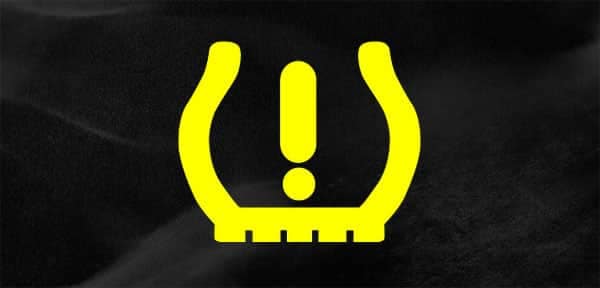Table of Contents
TPMS - Tire pressure monitoring system - it consists of small electric sensors fitted to each wheel of the vehicle to monitor tyre pressure and feed this data back to the car. Should one or more tyre see a change in air pressure, the system will show a yellow warning light on the dashboard to alert the driver.

Iindicator light in your vehicle
1. What Does the TPMS Light Indicate ?
A tire pressure sensor fault means that there is a condition affecting the Tire Pressure Monitoring System (TPMS) on the vehicle. Sometimes the light might come on to let you know there is a problem where the air pressure of a tire is too high or low. Other times, it means there is a fault with the system.
2. Causes of Tire Pressure Sensor Fault Blinking
* Tire Pressure Low
Depending on the car, a blinking TPMS light might mean that at least one tire is low. Some vehicles allow you to check the pressure remotely from the car’s interior, so you can press a button and see the air pressure for all four tires.
Other cars will only warn you that the pressure isn’t adequate. Then you have to get out and use a tire gauge to check each of them. Make sure that they’re all properly inflated according to the manufacturer’s recommendations.
* Tire Pressure Sensor Failed
Tire pressure sensors have batteries that can fail. They usually last a fairly long time, but if they run out of power, it will trigger a warning upon the dashboard. Other times, the sensors can become worn out or corroded and stop working, causing a similar warning.
* Sensor Lost Connection
The sensors in the TPMS system report information to the car’s computer. If their connection becomes disrupted, the system will announce a fault over the dashboard. That can happen if you hit a hard bump or under certain other circumstances.
* New Wheels or Tires
If you recently mounted new tires on your existing wheels or put new wheels on your car, you may need to reset the system. That’s because changes to the wheel and tire setup require reconnecting either the old sensors or new ones to the system. And, depending on the changes you made, the car might expect a pressure different than what you have set.
For instance, if you just swapped from your winter wheels to your summer wheels, you made need to adjust the pressure requirements for the system.
* Changing Weather and Temperatures
Many people experience TPMS sensor issues when the temperature changes significantly in a short period. That’s because the air temperature affects the pressure in your tires. When it’s very cold, the sensors will see less pressure. And, as it warms up, the pressure will increase.
3. How to Fix Tire Pressure Sensor Fault
- Tools and Equipment Needed
To fix an issue with your tire pressure, you’ll need an air gauge to measure tire pressure and a compressor.
- Let the Tires Cool
To check your tire pressure, the tires have to be cold. So if you were out for a drive, let the car sit for a few hours or overnight.
- Unscrew the Valve Stem Cap
Pick a corner of the car, and start with that tire. Unscrew the cap on the valve stem so you can access it.
- Check the Air Pressure
Using your air gauge, press it to the valve stem, and read the air pressure. Compare that to the manufacturer’s recommendation for your vehicle setup.
- Set the Proper Pressure
Adjust the air pressure by attaching the hose from the compressor to the valve stem and inflating the tire. Be careful not to overinflate, or you’ll have to use the back of the gauge to press the release button and let some air back out.
- Re-Initialize the TPMS
Now that you know the pressure is correct, you can reset the TPMS. Each car is different. But, typically, that means turning the vehicle on and driving a very short distance. Then, following the prompts over the dashboard, you can re-initialize the system.
This procedure is also how you can make adjustments to your desired air pressure. For instance, if you plan on traveling with a heavier load than usual, most cars need a bit more air in the tires. You’ll have to tell the TPMS that you’ve made a change. Otherwise, the light may stay on.
Author: Novie Dumalag on Facebook
Ken
ContributorT: @ManualsFile
https://ManualsFile.com
Mon - Sun 09:30 am - 05:30 pm